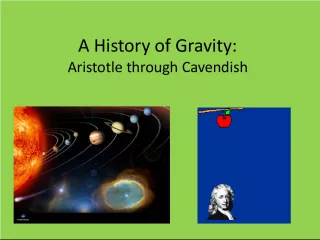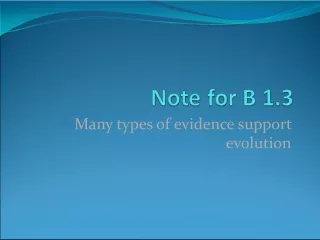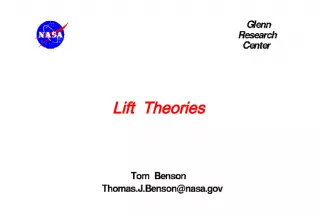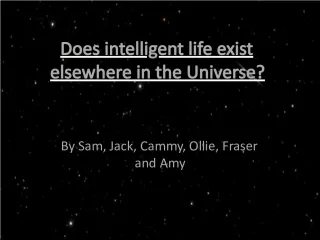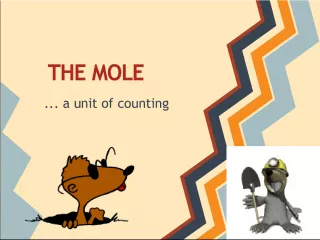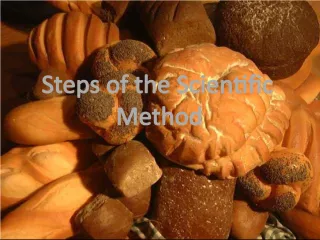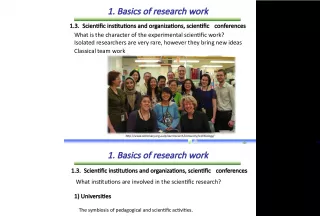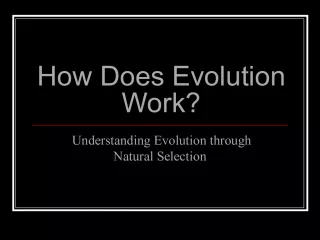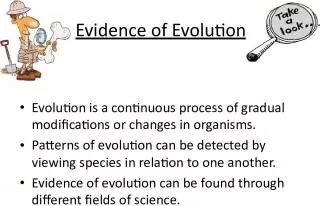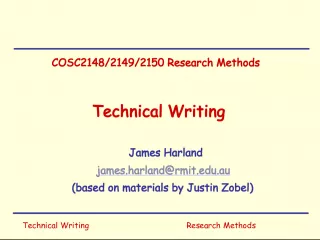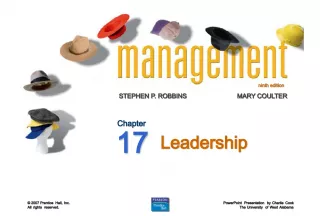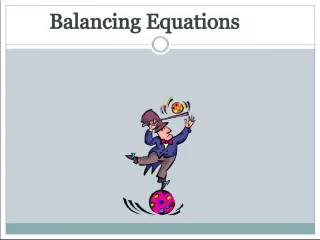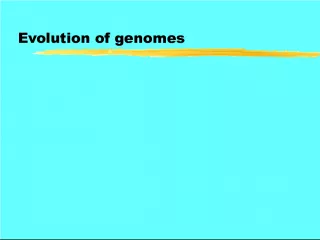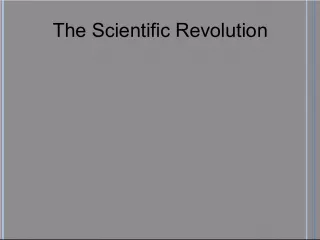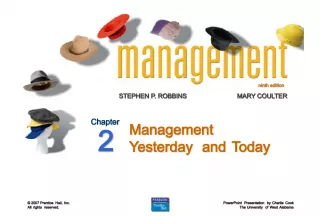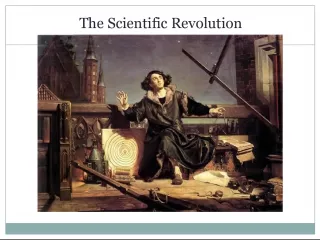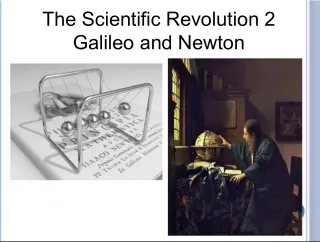The Evolution of Scientific Theories: From Atoms to Dinosaurs
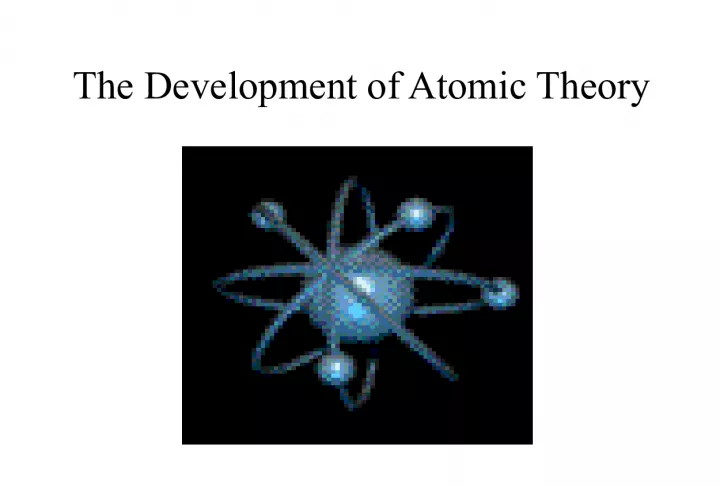

This article explores the development of atomic theory and the similarities between our knowledge of atoms and dinosaurs. Theories in science constantly change based on new information and discoveries. Despite not being able to directly observe atoms or dinosaurs, we continue to learn more about them through indirect evidence.
- Uploaded on | 1 Views
-
 marika
marika
About The Evolution of Scientific Theories: From Atoms to Dinosaurs
PowerPoint presentation about 'The Evolution of Scientific Theories: From Atoms to Dinosaurs'. This presentation describes the topic on This article explores the development of atomic theory and the similarities between our knowledge of atoms and dinosaurs. Theories in science constantly change based on new information and discoveries. Despite not being able to directly observe atoms or dinosaurs, we continue to learn more about them through indirect evidence.. The key topics included in this slideshow are Atomic theory, scientific theories, evolution, indirect evidence, discoveries,. Download this presentation absolutely free.
Presentation Transcript
1. The Development of Atomic Theory
2. Do Theories in Science Stay the Same? Ideas and theories in Science change as new information is gathered. (question 1) Our theory about the atom has changed over time as new studies are done. Even though no one has ever seen an atom up close we are still able to make new discoveries just like we have made new discoveries about dinosaurs.
3. What do Dinosaurs and Atoms have in Common? (not in notes) No one has seen an atom or a dinosaur directly. We know of their existence only by indirect evidence. Our theories of both dinosaurs and atoms has changed over time based on this indirect evidence
4. This fossil evidence shows us that some dinosaurs may evolved into birds.
5. Democritus was an ancient Greek philosopher who lived from 460 - 370 B.C. What did Democritus conclude about cutting matter in half? There was a limit to how far you could divide matter. You would eventually end up with a piece of matter that could not be cut . He thought matter is like motion. It cannot be divided in half forever. The tortoise and hare would never finish the race if you could keep dividing the distance to the finish line in half forever. Who was Democritus?
6. What does the Greek word atomos mean ? The Greek word atomos means not able to be divided or indivisible .
7. What did Democritus propose about the atom? (not in notes) Atoms are small hard particles. Made of a single material thats formed into different shapes and sizes. They are always moving They form different materials by joining together . ( Which of these statements do we now know are correct? Was Democritus pretty smart for someone who lived thousands of years ago?)
8. Aristotle was a very famous Greek philosopher who believed that matter could be divided into smaller and smaller pieces forever. He held a very strong influence on popular belief and his views on this were accepted for two thousand years. Why werent Democrituss ideas accepted? (not in notes)
9. What is an Atom? An atom is the smallest particle that an element can be divided and still be that element. For example the smallest particle of carbon is a single atom of carbon. If you divide it is no longer carbon anymore. PIECES OF CARBON CARBON ATOM
10. John Dalton 1776-1844 Two thousand years later a British chemist and schoolteacher brings back Democrituss idea of the atom He performed many experiments to study how elements join together to form new substances He found that they combine in specific ratios (remember the electrolysis of water) and he supposed it was because the elements are made of atoms.
11. What 3 new ideas did John Dalton propose about the atom? All substances are made up of atoms which are small particles that cannot be created, divided, or destroyed. Atoms of the same element are exactly alike and atoms of different elements are different. Atoms join with other atoms to form different substances
12. J.J. Thomson 1856-1940 What particle did Thomson discover? J.J. Thomson discovered that atoms are made of smaller negatively- charged particles called electrons. Thomsons discovery was the result of doing experiments with cathode ray tubes
13. Ernest Rutherford (1871 - 1937) Awarded the Nobel Prize in Chemistry for his discovery of alpha particles, positively charged particles emitted from radioactive elements Was a student of J.J. Thomson but disagreed with the Plum Pudding Model Devised an experiment to investigate the structure of positive and negative charges in the atom.
14. What did most of the particles shot at the gold foil do? Most of the particles traveled straight through the gold foil What was the surprising behavior of a few of the particles? A few of the particles were deflected and some even bounced back
15. Rutherfords Revised Atomic Theory (1911) Result : Most of the positively charged particles went straight through the gold foil. Atomic Theory : Most of the matter of the atom is found in a very small part of the atom. This is called the nucleus of the atom. It is very tiny and extremely dense . Result: Some of the positively charged particles were deflected or even bounced back. Atomic Theory: Like charges repel so the nucleus must have a positive charge . If electrons have a negative charge they could not be in a positively charged nucleus. Electrons must surround the nucleus at a distance. Result: The diameter of the nucleus is 100,000 times smaller than the diameter of the entire gold atom. Atomic Theory: Atoms are mostly empty space with a tiny , massive nucleus at the center .
16. Why is the head of a pin compared to the diameter of a stadium like an atom? The diameter of a pinhead is 100,000 times smaller than the diameter of a stadium. Likewise the diameter of the nucleus of an atom is 100,000 times smaller than the diameter of an atom
17. The Bohr Model of the Atom What did Bohr learn about electron movement? Bohr proposed that electrons move in paths at certain distances around the nucleus. Electrons can jump from a path on one level to a path on another level. Click here http://www.colorado.edu/p hysics/2000/quantumzone/ bohr.html
18. The Modern Theory of the Atom Electrons travel in regions called electron clouds You cannot predict exactly where an electron will be found http://www.fearofphysics.com/Atom/atom3.html
19. Energy Levels The energy that an electron has is based on its location around the nucleus. (Electrons that are closer to the nucleus have less energy than those that are farther away from the nucleus)
20. How can bookshelves help you understand the movement of electrons? Each shelf represents an energy level Each book represents an electron You can move a book to a higher or lower shelf with the correct amount of energy. A book cannot be between shelves (An electron can move by gaining or losing energy but can never be between energy levels)
21. How small are atoms? THERE ARE 2 X 10 22 ATOMS IN A PENNY. If all the atoms in a penny were blown up to the size of a grain of sand they would cover the entire state of California
22. What can a scanning tunneling electron microscope show us? These images do not show an actual picture of an atom. They show a color- enhanced image of the surface of a material at the atomic level.
